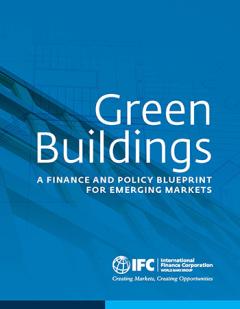
Green buildings play a pivotal role in spurring low-carbon economic growth and securing a transition to clean energy as an increasing number of companies and governments aim to be carbon neutral by 2050. During the next decade, green buildings represent a significant low-carbon investment opportunity in emerging markets—$24.7 trillion by 2030. Cities in emerging markets are expanding at a fast pace to keep up with high population growth and rapid urbanization. The floor area of the buildings that dot our skylines is expected to double by 2060. Most of this growth will occur in residential construction, particularly in middle-income countries. Meeting the demand for new buildings through green construction can spur low-carbon economic growth and create skilled jobs in emerging markets for decades to come.
There is a strong business case for growing the green buildings market. Emerging evidence indicates that green buildings are a higher-value, lower-risk asset than standard structures. Besides lowering energy consumption, and therefore operational costs, greener buildings typically achieve higher sale premiums and attract and retain more tenants, ensuring a more continuous revenue stream. In addition, green buildings can help investors and owners manage the risks associated with a transition to a lower carbon economy. This transition will bring regulatory, economic, and resource changes, and some energy inefficient assets will no longer be profitable.
Green buildings play a pivotal role in spurring low-carbon economic growth and securing a transition to clean energy as an increasing number of companies and governments aim to be carbon neutral by 2050. As an impact investor focused on pursuing positive social and environmental outcomes through profitable investments, IFC views the green buildings sector as a multitrillion-dollar business opportunity and an avenue to reduce energy-related emissions.
